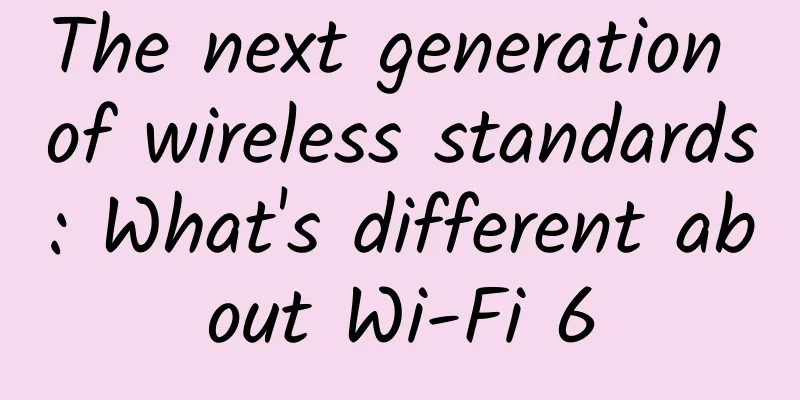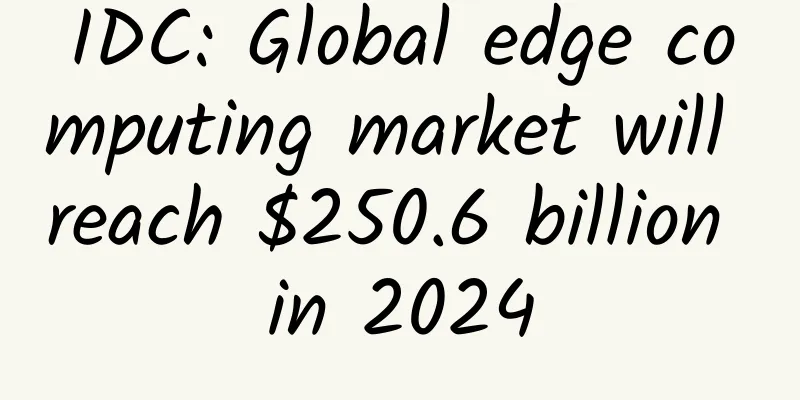The next generation of wireless standards: What's different about Wi-Fi 6

|
Wi-Fi 6 is the next generation wireless standard that is faster than 802.11ac. In addition to faster speeds, it can also provide better performance in "congested areas". The standard will also be officially released in 2019. Wi-Fi version number Yes, Wi-Fi standards now have version numbers! Previously confusing Wi-Fi standard names like “802.11ac” have now been renamed to more user-friendly names — “Wi-Fi 5.” Here is the Wi-Fi version:
The Wi-Fi Alliance also announced that it hopes to see these digitally labeled Wi-Fi version numbers appear in software, so that users can quickly tell which Wi-Fi network connection is faster when connecting to a smartphone, tablet or laptop. Older versions of the Wi-Fi standard are not widely used and may not be officially available. But they also have "Wi-Fi version numbers":
Faster Wi-Fi 6 As always, the newest Wi-Fi 6 standard offers faster data transfer speeds. If you’re using a single-device Wi-Fi router, Wi-Fi 6’s maximum potential speeds should be around 40% faster than Wi-Fi 5. Wi-Fi 6 improves throughput through more efficient data encoding, essentially packing more data onto the same radio waves, and the chips that encode and decode those signals are more powerful to handle the extra work. The new standard, Wi-Fi 6, even improves 2.4GHz network speeds. While the industry has moved to 5GHz Wi-Fi to reduce interference, 2.4GHz is still a great way to penetrate solid objects. And as older devices like old cordless phones and wireless baby monitors are retired, interference with 2.4GHz shouldn’t be a big deal.
The new "TWT, Target Wake Time" feature means your smartphone, laptop and other Wi-Fi enabled devices can also have longer battery standby time. When an access point communicates with a device (such as a smartphone), it can accurately "tell the device" when to put its Wi-Fi radio to sleep and when to wake it up to receive the next transmission. This mode of operation can save power on Wi-Fi clients to a certain extent, which also means longer standby time when the device is using batteries.
When you are in an area with a large number of Wi-Fi enabled devices (where isn’t it now except in the deep mountains and forests? You name it!!), using Wi-Fi often gets bogged down. Imagine a busy stadium, airport, hotel, shopping mall, or even a crowded office, where everyone is connected to Wi-Fi, it would be a wonder if the wireless connection is fast enough. The new Wi-Fi 6, or 802.11ax, uses a number of new technologies to help address these issues. Intel claims that in "crowded areas" with a lot of connected devices, Wi-Fi 6 will increase average speeds per user by "at least 4 times." These new technologies aren’t just for public spaces; they also apply if you have a lot of devices connected to Wi-Fi or live in a device-dense apartment building. How Wi-Fi 6 will solve congestion issues Ordinary users don’t actually need to know these working details, as long as it’s easy to use! But this is how Wi-Fi 6 devices work in the background: Wi-Fi 6 can divide wireless channels into a large number of "sub-channels", each of which can carry data for different devices. This is achieved through a technology called OFDMA, allowing Wi-Fi access points to communicate with more devices at the same time. The new riderless standard also improves on MIMO (multiple-in/multiple-out), which involves multiple antennas and allows access points to communicate with multiple devices at once. (Wi-Fi 5 access points can also communicate with devices simultaneously, but those devices can't respond at the same time.) Wi-Fi 6 has an improved version of multi-user, or MU-MIMO, that allows devices to respond to a wireless access point simultaneously. Wireless access points that are close to each other can transmit on the same channel, in which case the wireless will listen and wait for a clear signal before replying. With Wi-Fi 6, wireless access points that are close to each other can be configured to have different "BSS" (Basic Service Set) "colors", which are just numbers between 0 and 7. If a device is checking if the channel is all clear and receiving, it may notice a transmission with a weaker signal and a different "color", and it can then ignore this signal and transmit without waiting. This will improve performance in congested areas, also known as "spatial frequency reuse." These are just some of the more significant improvements, but the new Wi-Fi 6 standard also includes many smaller improvements, such as improved beamforming.
When purchasing new wireless devices, ordinary users no longer have to understand whether 802.11ac or 802.11ax is the latest standard. Equipment manufacturers only need to mark "Wi-Fi 6" or "Wi-Fi 5" and they will be done. At that time, users will be able to see the "Wi-Fi 6 Certified" logo on devices certified by the Wi-Fi Alliance, while previously certified devices will only be marked "Wi-Fi Certified". Wi-Fi version number is not mandatory Although the use of Wi-Fi version numbers makes it easier for users to purchase wireless devices, the Wi-Fi Alliance has no right to force device manufacturers to use version numbers. Some manufacturers may simply ignore the use of Wi-Fi version numbers for publicity or gimmicks, and directly label the new generation of Wi-Fi that seems more technical and powerful as "802.11 ax". Many companies may not rush to rename the existing 802.11ac as Wi-Fi 5. |
Recommend
Digital transformation accelerates the arrival of the 6G era
World Telecommunication and Information Society D...
WiFi will be replaced in the future, what do you think?
WIFI is really going to be replaced! But it's...
The 2019 First Intelligent Communications Industry Summit was held, and cloud communications entered the technology-driven stage
[51CTO.com original article] On the afternoon of ...
How to Re-evaluate Unified Communications Tools in the Work-from-Home Era
As the pandemic shapes a new normal, value chains...
NTT and CheckPoint Join Forces to Help Enterprises Defend Against Security Threats
[[409785]] As a global strategic partner of Check...
[5.1] edgeNAT VPS 20% off for monthly payment, 30% off for annual payment, top up 500 yuan and get 100 yuan
In addition to the regular 30% off for annual pay...
Talking about new IP technology in data centers
Ethernet technology, also known as IP technology,...
Discussion | Technical advantages of the top 9 leading SD-WAN providers abroad
SD-WAN technology helps make wide area networks m...
The past and present of ultra-low latency live broadcast technology
Foreword: According to the "Statistical Repo...
RAKsmart: Dedicated servers starting at $46/month, E5+32G bare metal cloud starting at $69/month
RAKsmart is a foreign hosting company operated by...
Technical Tips | Alibaba Cloud's Practical Exploration of Building Lakehouse Based on Hudi
1. Data Lake and Lakehouse At the 2021 Developer ...
IPv6 is coming, what should we do with SDN?
IPv6 has been called for so many years, and final...
TCP source code analysis - three-way handshake Connect process
[[386167]] This article is reprinted from the WeC...
2021 China Internet Haha List 2: Top Ten Events
In 2021, the Internet industry has emerged with m...
Cloud Gateway for Home Computing Networks
Author: Tian Yang, Unit: China Mobile Smart Home ...









